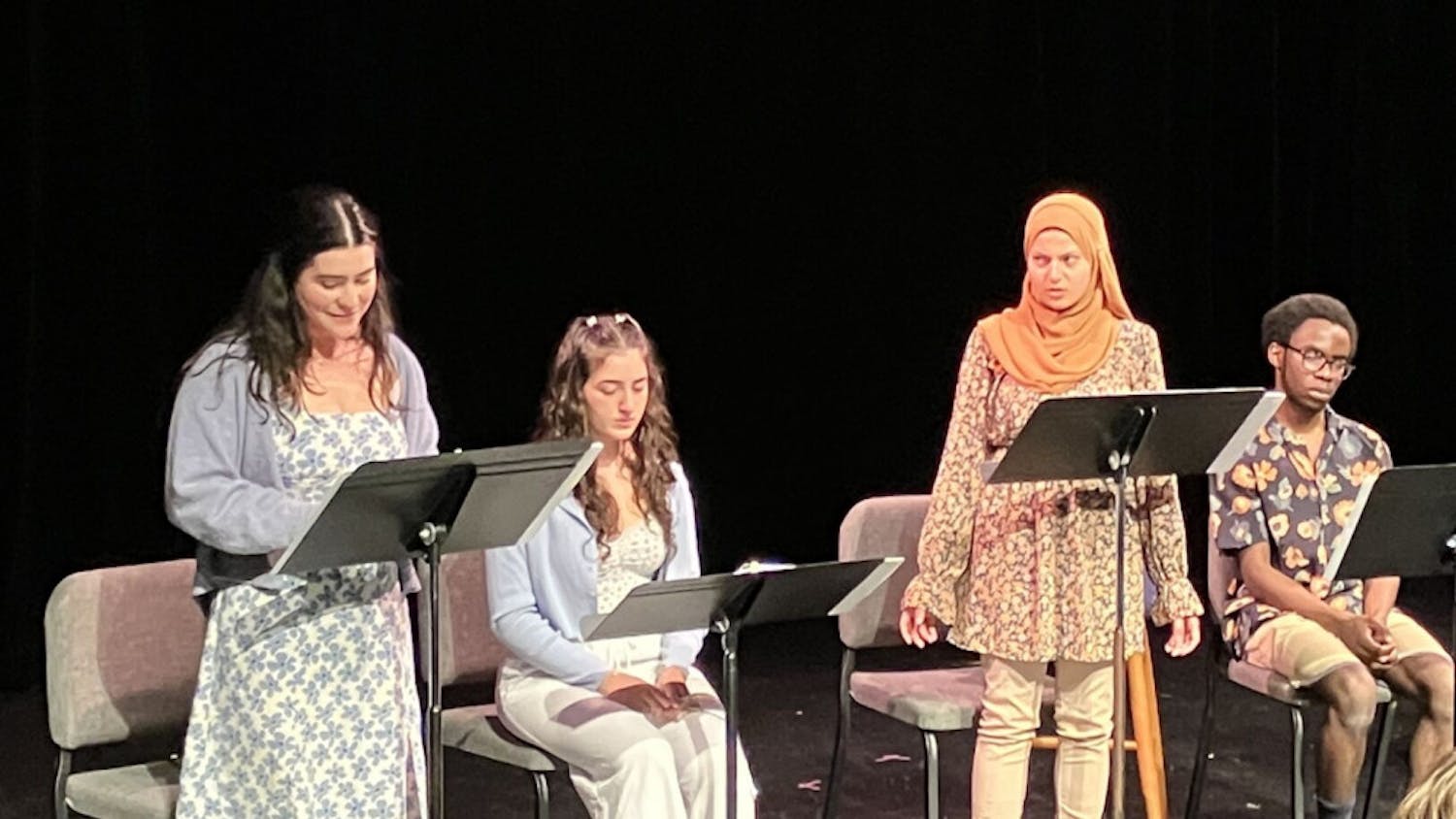“The Royale” transports viewers to the 1910s world of boxing, with a raised ring center stage and a patched-up punching bag hanging from one side of the ceiling. Written by Marco Ramirez and directed by Patdro Harris, the play was performed at the Theatrical Outfit from Oct. 10 to Nov. 4.
The play starred Emory alumnus and Actors Equity Association actor Garrett Turner (11C) as Jay Jackson, a character based on African-American boxer Jack Johnson.
The 90-minute play is performed in six scenes, or “rounds.” It follows Jay, his trainer Wynton (Rob Cleveland), his opponent turned sparring partner Fish (Marlon Andrew Burnley), his representative Max (Brian Kurlander) and his sister Nina (Cynthia D. Barker). Over the course of the play, Jay, the African-American heavyweight world champion, prepares to take on the white heavyweight world champion. The fight is unprecedented in a world where Jim Crow laws are still in effect and lynchings are frequent. The characters are sure that the fight will make the front pages.
In the first two “rounds,” it’s unclear whether or not Jay will be able to take on the champion at the end of the play. He finds out that some people object to the fight because of his race, and multiple people have attempted to bring guns into his press conferences. Jay’s sister Nina arrives and tells him that there will be consequences if he wins the fight, explaining that her young son was threatened. When the final fight against the world champion comes around and Nina’s figure looms at the forefront, it becomes less of a question of whether or not Jay can win the fight, but if he will choose to do so.
Aspects of the performance that were particularly striking were the blocking and rhythmic elements, especially during the fights at the beginning and end. The opponents were placed at opposite ends of the stage, facing the audience. Without looking at each other, they perfectly acted out and reacted to the punches thrown during the matches. There was a distinct rhythm to these scenes, established by voices, punches and claps. This was especially impressive during the last scene, when none of the characters looked at each other. In this scene, we don’t see Jay’s opponent: Nina stands in his place and talks to Jay as he throws punches towards her. This moment gives us a powerful look into Jay’s mind in a way only a live theater performance can. The show was exciting and musical. What’s perhaps more impressive is that all of this was accomplished with only two and a half weeks of rehearsal prior to adding technical elements, Turner said in a phone interview.
The lighting and sound was also masterfully designed, with lights pulsing to the beat of the music, juxtaposing the excitement of the match with the reactions of the characters affected by it. For better or worse, some of the transitions emulated “Rocky”-esque training montages, which were entertaining, but could have been more theatrical and seemed to take the audience out of the moment. However, the overall tone was mostly consistent.
The casting was also stellar. There is only one woman in the small cast, and she only appears more than halfway through the play. However, Barker took hold of everything her character was feeling — both frightened for her family and strong, both what keeps Jay from acting and what motivates him to action. Cleveland and Kurlander both had wonderful comedic timing, and Burnley’s acting gave a certain honesty to his optimistic character. Through Turner’s performance, Jay’s choice as to whether or not to win the fight seemed to be based on more than fear or ego. It became a choice of whether he would be the one to take this important step against racial oppression.
“[It’s about] the real cost of the steps we take to push back on the status quo,” Turner said. “[I hope the audience comes away with] a visceral theater experience … [and] the sense of being alive in a room with other people.”
Based on the reactions during the show and the excited chatter afterwards, the room seemed pretty alive to me. The play and this performance reflected a sense of both realization of reality and hope, as Turner put it: an “encouragement to courage” specifically in the face of oppression, which is something that Johnson exuded.





